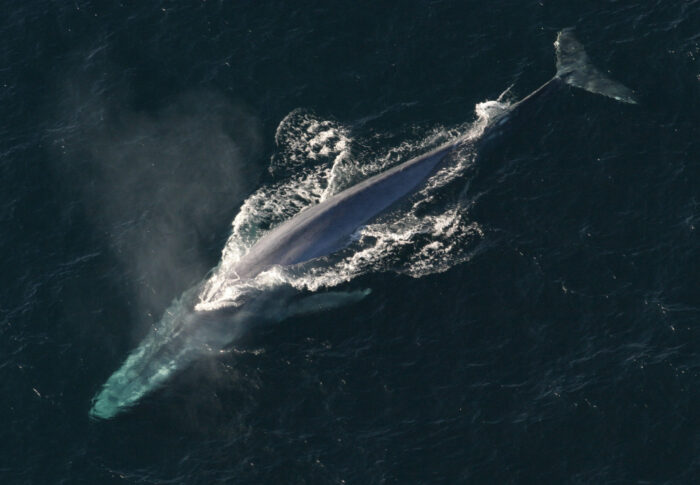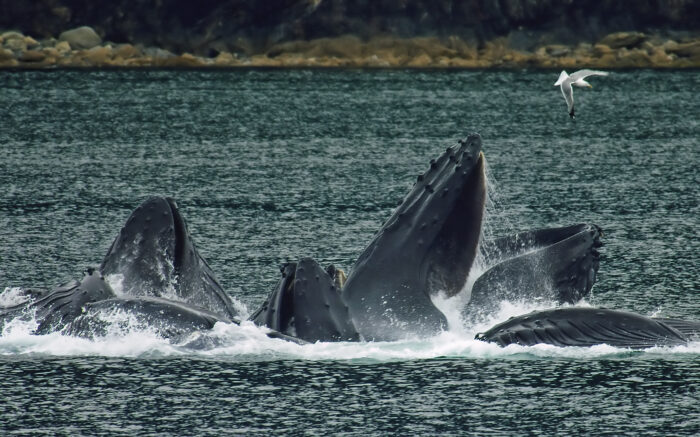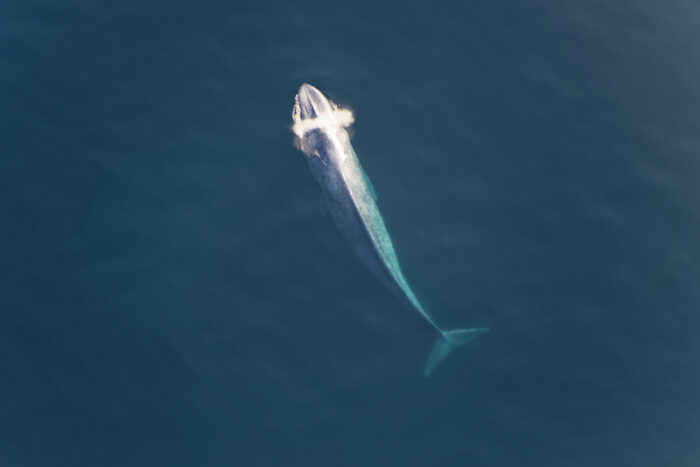A new study of baleen whales is raising some alarming news about what they eat.
The largest species of whale, the blue, may be eating up to 10 million pieces of microplastic per day. That equals around 44 kg (96 lb)—which is about the weight of a 13-year-old kid.
And yes, that is every day.
Even though blue whales are the largest creatures to ever live on Earth, that is a significant number. Over the course of an entire feeding season, which can last between 90 to 120 days, the number of pieces could enter the billions.
It is one of the latest signs of the dire nature of ocean pollution and the problems of microplastics in the water.
What species were looked at?

A blue whale was one of three whales studied. (Wikimedia Commons/NOAA)
The study did not only track blues. It followed 191 blue, fin, and humpback whales living off the California coast. The researchers used tags to track each animal’s movements and recorded where—and at how deep—they fed. The depth is especially important because the microplastics are more abundant nearer to the surface.
Unfortunately, this is also the area where baleen whales do most of their feeding.
The whales generally fed the most between 250 m and 50 m (820 ft. and 164 ft.) from the surface. Looking at the water where the feeding took place, the researchers were then able to estimate how much plastic was ingested.
In the study, humpbacks were estimated to consume around four million pieces per day.
How does plastic get inside?

Baleen whales, like these humpbacks, are filter feeders. They take massive gulps and filter their food out of the sea, like a strainer taking pasta out of water. (Wikimedia Commons)
Baleen whales are filter feeders. They take in huge amounts of water with a massive gulp, then use their tongue to push the water back through their strands of baleen. Food gets caught in the baleen and is eaten.
This process is amazingly good at extracting tiny creatures like krill from the water. But it’s not able to separate trash from food. Whatever is in the water that is gulped by the whale will generally get eaten. And the issue is even more complex than it sounds.
That’s because researchers have found that the plastic and the krill are often in the same package. Meaning that the whales eat all of those microplastics not because they are all floating loose in the water, but because the plastics were already eaten by the krill. In fact, it was estimated that around 95 per cent of the microplastics eaten by the whales was in the animals they ate.
To put it another way: Krill eats the plastic. Whale eats the krill. Plastic is eaten by the whale.
What does this mean?
This study is only an estimate, but even if the team’s numbers are a bit high, any plastic is not a part of any animal’s healthy diet. The next step for the researchers will be to determine what effect this diet is having on the animals themselves.
At the very least, it shows the importance of addressing the problems of microplastic pollution. This includes improving recycling, reducing the use of plastics overall, and trying to remove as much plastic from the ocean as possible.
 The blue whale is the world's largest animal. (ID 152597313
© Anne Webber | Dreamstime.com)
The blue whale is the world's largest animal. (ID 152597313
© Anne Webber | Dreamstime.com)










Blue whales and other animals, including krill, should be treated with more kindness.